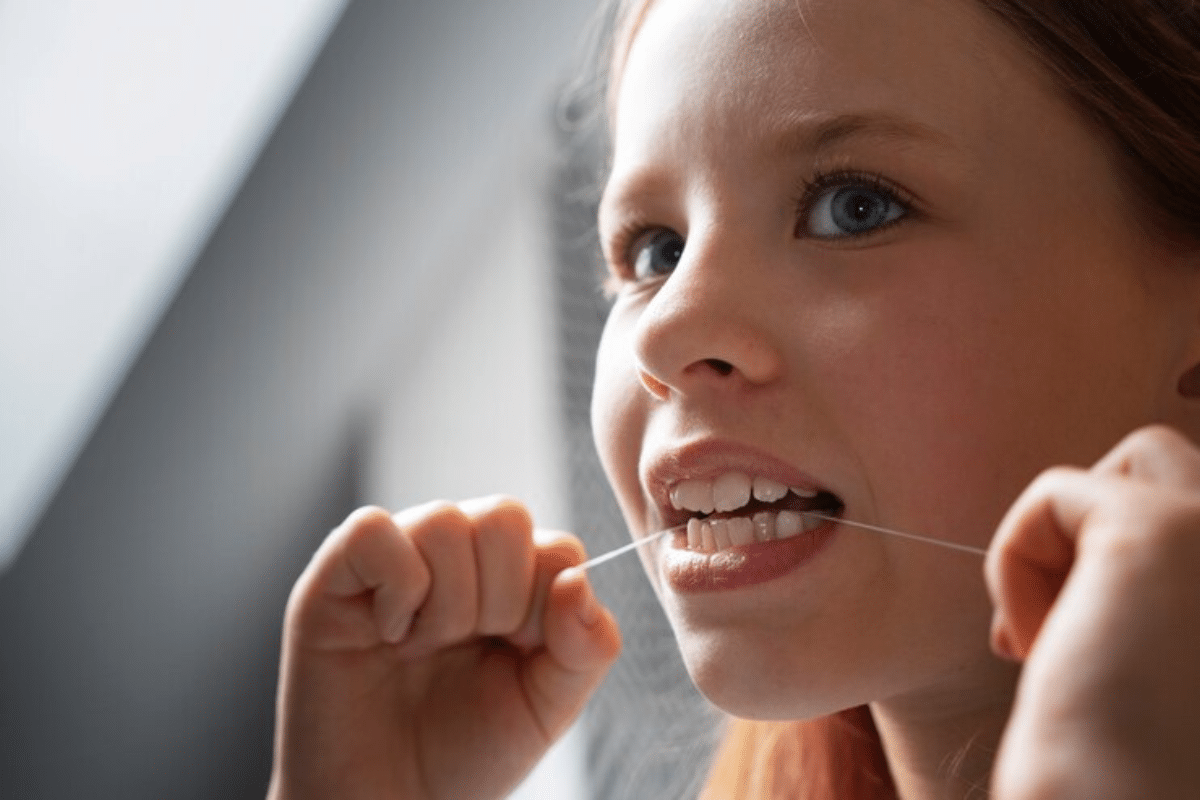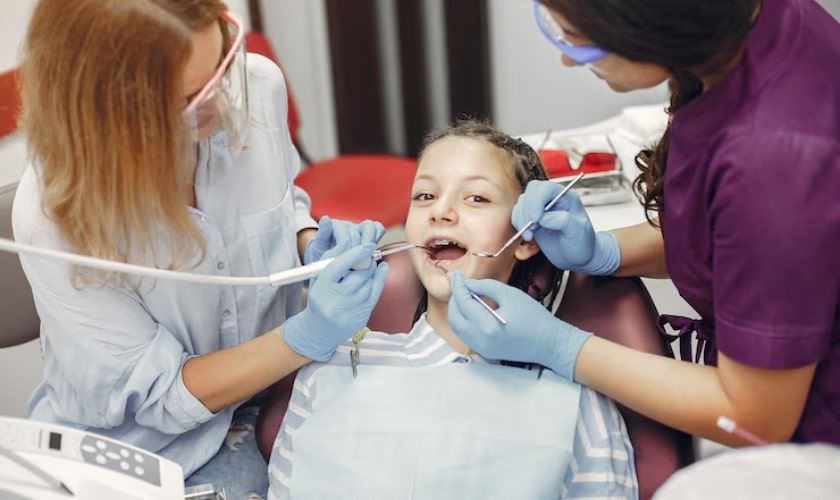
Flossing is often overlooked in children’s oral hygiene routines, but it’s just as important as brushing. Flossing helps remove food particles and plaque from between teeth, where a toothbrush cannot reach. This prevents cavities and gum disease, ensuring a healthy smile for years to come.
The Importance of Flossing for Children
Flossing is essential for maintaining oral health, even for children. Here’s why:
- Prevents Cavities Between Teeth: Plaque buildup between teeth can lead to cavities if not removed regularly. Flossing helps keep these areas clean and free of harmful bacteria.
- Reduces Gum Disease Risk: Gum disease can start as early as childhood if plaque is allowed to accumulate. Flossing helps prevent gingivitis and other gum issues by removing plaque from hard-to-reach areas.
- Promotes Healthy Habits: Introducing flossing early helps children develop good oral hygiene habits that will benefit them throughout their lives.
Recommended Flossing Methods for Children
1. Start Early
- When to Begin: Flossing should begin as soon as your child has two adjacent teeth. For many children, this can be around the age of 2 or 3. At this stage, you may need to help your child with flossing until they develop the dexterity to do it themselves.
2. Choose the Right Type of Floss
- Dental Floss: For older children who can handle it, traditional dental floss is effective. Use a waxed floss to make it easier to slide between teeth without fraying.
- Floss Picks: For younger children or those who have difficulty using traditional floss, floss picks or flossing devices can be a good alternative. These tools are easier to handle and can make flossing more enjoyable for kids.
3. Flossing Technique
- Use a Proper Length: Cut about 18 inches of dental floss. Wrap the ends around your middle fingers, leaving a few inches of floss to work with. Gently guide the floss between the teeth using a back-and-forth motion.
- Gentle Curving: Curve the floss around each tooth in a C-shape and slide it gently under the gumline. Avoid snapping the floss into the gums, as this can cause discomfort or damage.
- Clean Both Sides: Make sure to floss both sides of each tooth. This ensures that all plaque and food particles are removed from between the teeth.
- Use Fresh Sections: Use a fresh section of floss for each tooth to prevent transferring bacteria from one area of the mouth to another.
4. Make Flossing a Fun Routine
- Positive Reinforcement: Praise your child for flossing and make it a part of their daily routine. Consider using a sticker chart or small rewards to encourage consistency.
- Incorporate Games: Turn flossing into a game by timing it or using a fun, interactive flossing tool. Engaging your child in the process can make it more enjoyable.
5. Supervision and Assistance
- Until They’re Ready: Most children need help with flossing until they’re around 8 to 10 years old. During this time, continue to supervise and assist with flossing to ensure it’s done correctly.
- Demonstration: Show your child how to floss properly. Demonstrate the technique and help them practice until they’re comfortable doing it on their own.
Common Challenges and Solutions
1. Difficulty with Coordination
- Floss Picks: If your child struggles with the coordination required for traditional flossing, consider using floss picks or a flossing device. These tools are designed to be easier to handle and can simplify the process.
2. Discomfort or Sensitivity
- Gentle Technique: If your child experiences discomfort, ensure that you’re using a gentle technique and that the floss isn’t being forced between teeth. If gum sensitivity persists, consult with a pediatric dentist in San Antonio for personalized advice.
3. Reluctance to Floss
- Make It Routine: Integrate flossing into your child’s daily routine alongside brushing. Consistency helps children understand the importance of flossing and makes it a regular part of their oral hygiene habits.
- Use Encouragement: Offer praise and positive reinforcement to encourage your child. Making flossing a fun and rewarding experience can help overcome resistance.
When to Talk To A Pediatric Dentist?
Consulting a pediatric dentist in San Antonio can provide additional support and guidance on flossing techniques and overall oral health. A pediatric dentist can:
- Assess Oral Health: Evaluate your child’s oral health and provide recommendations for effective flossing techniques.
- Offer Personalized Advice: Tailor advice to your child’s specific needs and address any issues or concerns related to their oral hygiene routine.
- Provide Preventive Care: Offer preventive treatments and education to help maintain your child’s dental health and prevent issues before they arise.
Proper flossing is an essential component of your child’s oral hygiene routine. By starting early, using the right tools and techniques, and making flossing a fun and consistent part of their daily routine, you can help your child develop healthy habits that will benefit them throughout their lives. Regular visits to a pediatric dentist in San Antonio will ensure that your child’s oral health is monitored and maintained, providing expert care and guidance for a lifetime of healthy smiles.







